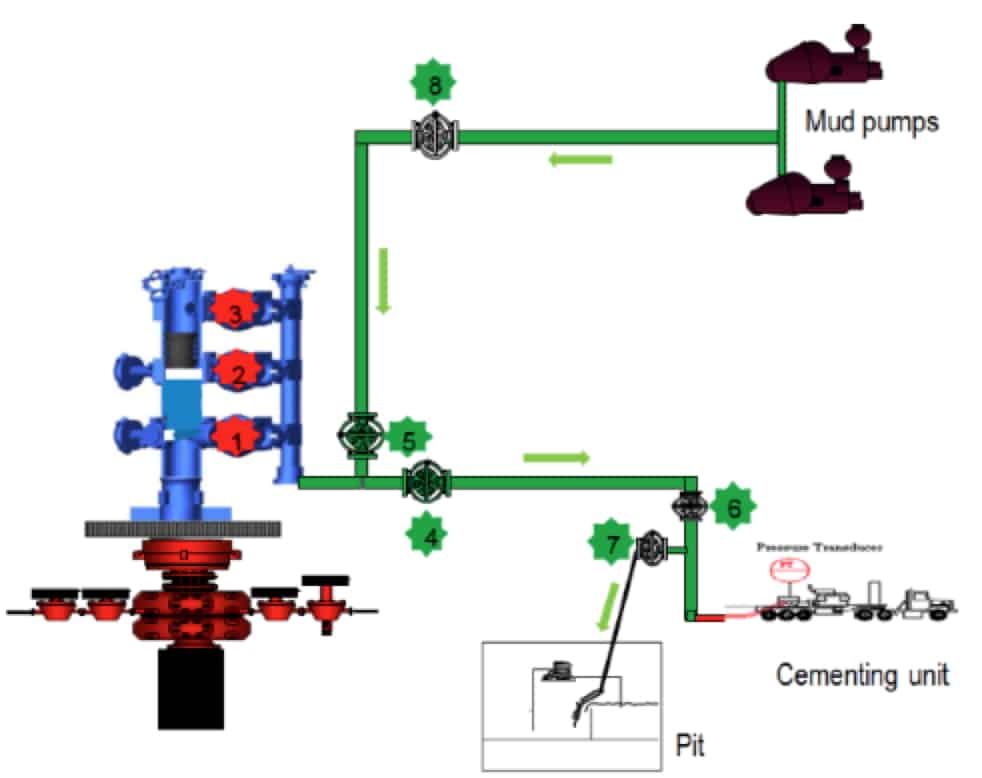This page gives a helpful breakdown of all the important steps during the well-cementing process. At the moment of the cementing operation, field personnel in supervisory roles are responsible for overseeing the location job preparations and execution. This responsibility primarily lies with the cementing contractor. This contractor is expected to have a system in place to assure all aspects of the cementing process to conform to documented requirements. (As well as the contractors’ own binding documents, mandatory standards and procedures).
Secondly, personnel on-site will be leading or witnessing, depending on contract type, the overall process involving all the parties with a role during the cementing operation. The following actions shall be implemented as quality control checks or inspection items for the cementing operation execution.
Before RIH Casing
- While circulating the hole clean and conditioning the mud, check the mud and ensure that the properties are as per the plan. Cross check with the cementing program.
- Review the casing tally and check if sufficient centralizers are available on-site.
- Calliper casing ID for displacement calculation (10% of joints).
- Review and understand planned contingencies described in the drilling program, cement proposal and/or signed Management of Change.
- Review the cement program and check the slurry volumes as per the caliper log and excess. Calculate and verify the displacement volume. Inform the field personnel or drilling engineer in case of any discrepancy.
- Check the cement slurry laboratory test and check all required materials are available in the programmed amount on-site.
- Ask the mud supervisor to check the mix water salinity. Report results to the job supervisor or drilling engineer.
- Witness the loading of plugs in the cement head.
While RIH Casing
- Witness the making up of the float equipment (thread lock compound should be used). Mostly, the casing shoe will be made up as an offline job on the ground or before being dispatched to the rig.
- Sporadically visit the rig floor to check the make-up torque; running speed including setting and pulling of slips; safe working practices; running tally.
- Monitor the mud return on the shale shakers due to casing displacement while RIH and report if any mud loss.
- When the casing shoe reaches the setting point, circulate to clean the hole and condition the mud. Check the mud and ensure that the properties are as planned. Cross check with the cementing program.
- When at shoe depth, count number of joints left. Compare them to the tally to ensure that the correct number of joints have been run.
- Apply casing movement as described in the drilling program.
- Record circulation pressure Vs. SPM. Crosscheck with the cementing contractors’ pre-job simulations.
- Check the rig pump efficiency and recalculate displacement strokes depend on the actual pump efficiency. (Even if the rig pumps aren’t planned to do the primary displacement, they shall still be available as a contingency).
Cement Slurries pumping
- Check that the job data recorder in the cement unit is working.
- Check the indicator on the cementing head to be sure the bottom plug (when applicable) has dropped.
- Record the initial and final pump pressure.
- Check the pressurized mud balance pumped density, at least, every 2-4 minutes.
- Monitor for losses; if losses are observed, Implement planned contingencies.
- Take samples of the cement blend, mix water, and cement slurry.
Cement slurry displacement
- Check the indicator on the cementing head to be sure the top plug/dart has dropped.
- Bump the top plug as described in the cementing program. Implement detailed contingencies if required.
- Report the final circulating pressure and applied casing test pressure as described in the drilling and/or cement program.
- Check the float equipment as described in the cementing program.
- All liner cementations to be displaced with the cement unit.
Please let me know if you find this article useful, then feel free to add any comment or suggestions. (Especially if you disagree with my outlining of the well-cementing process, or think that I have missed something).
Cheers
L. Diaz



Great article and very well explained. I believe in professionals so this is a very useful article for everyone. Many thanks for your share.
Thanks for your comment Raymond.